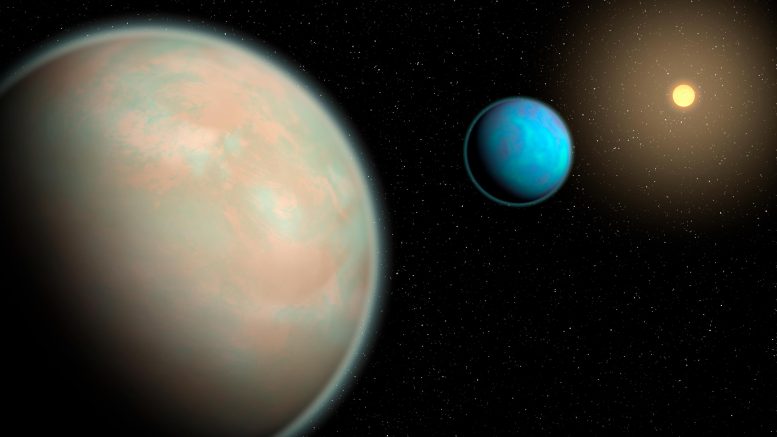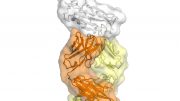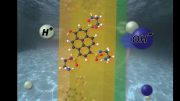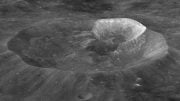
An illustration of two water-rich exoplanets with hazy atmospheres. Credit: Roberto Molar Candanosa/Johns Hopkins University
Scientists have made a significant breakthrough in simulating hazy conditions on water-rich exoplanets, offering new insights into the challenges of observing these distant worlds in the search for extraterrestrial life.
Researchers have successfully simulated conditions that allow hazy skies to form in water-rich exoplanets. This is a crucial step in determining how haziness muddles observations by ground and space telescopes.
New Tools for Exoplanet Study
The research offers new tools to study the atmospheric chemistry of exoplanets and will help scientists model how water exoplanets form and evolve, findings that could help in the search for life beyond our solar system.
“The big picture is whether there is life outside the solar system, but trying to answer that kind of question requires really detailed modeling of all different types, specifically in planets with lots of water,” said co-author Sarah Hörst, a Johns Hopkins associate professor of Earth and planetary sciences. “This has been a huge challenge because we just don’t have the lab work to do that, so we are trying to use these new lab techniques to get more out of the data that we’re taking in with all these big fancy telescopes.”
The team published its findings on November 27 in the journal Nature Astronomy.
Groundbreaking Laboratory Work
Whether a planet’s atmosphere contains hazes or other particles has a marked influence on global temperatures, incoming levels of starlight, and other factors that can hinder or foster biological activity, the researchers said.
The team ran the experiments in a custom-designed chamber within Hörst’s lab. They are the first to determine how much haze can form in water planets beyond the solar system, Hörst said.
Haze consists of solid particles suspended in gas, and it alters the way light interacts with that gas. Different levels and kinds of haze can affect how the particles spread out through an atmosphere, changing what scientists can detect about distant planets with telescopes.
Challenges in Exoplanet Observation
“Water is the first thing we look for when we’re trying to see if a planet is habitable, and there are already exciting observations of water in exoplanet atmospheres. But our experiments and modeling suggest these planets most likely also contain haze,” said Chao He, a planetary scientist who led the research at Johns Hopkins. “This haze really complicates our observations, as it clouds our view of an exoplanet’s atmospheric chemistry and molecular features.”
Scientists study exoplanets with telescopes that look at how light passes through their atmosphere, spotting how atmospheric gases absorb different hues or wavelengths of that light. Distorted observations can lead to miscalculations of the amounts of important substances in the air, such as water and methane, and the type and levels of particles in the atmosphere. Such misinterpretations can impair scientists’ conclusions about global temperatures, the thickness of an atmosphere, and other planetary conditions, Hörst said.
Simulating Exoplanetary Atmospheres
The team concocted two gas mixtures containing water vapor and other compounds hypothesized to be common in exoplanets. They beamed those concoctions with ultraviolet light to simulate how light from a star would start the chemical reactions that produce haze particles. They then measured how much light the particles absorbed and reflected to understand how they would interact with light in the atmosphere.
The new data matched the chemical signatures of a well-studied exoplanet called GJ 1214 b more accurately than previous research, demonstrating that hazes with different optical properties can lead to misinterpretations of a planet’s atmosphere.
Future Research Directions
Alien atmospheres can be very different from those in our solar system, Hörst said, adding that there are more than 5,000 confirmed exoplanets with varying atmospheric chemistries.
The team is now working to create more lab-made haze “analogs” with gas mixtures that more accurately represent what they see with telescopes.
“People will be able to use that data when they model those atmospheres to try to understand things like what the temperature is like in the atmosphere and the surface of that planet, whether there are clouds, how high they are, and what they are made of, or how fast the winds go,” Hörst said. “All those kinds of things can help us really focus our attention on specific planets and make our experiments unique instead of just running generalized tests when trying to understand the big picture.”
Reference: “Optical properties of organic haze analogues in water-rich exoplanet atmospheres observable with JWST” by Chao He, Michael Radke, Sarah E. Moran, Sarah M. Hörst, Nikole K. Lewis, Julianne I. Moses, Mark S. Marley, Natasha E. Batalha, Eliza M.-R. Kempton, Caroline V. Morley, Jeff A. Valenti and Véronique Vuitton, 27 November 2023, Nature Astronomy.
DOI: 10.1038/s41550-023-02140-4
Other authors include Michael Radke and Sarah E. Moran, of Johns Hopkins; Nikole K. Lewis, of Cornell University; Julianne I. Moses of Space Science Institute; Mark S. Marley of University of Arizona; Natasha E. Batalha of NASA’s Ames Research Center; Eliza M.-R. Kempton of University of Maryland, College Park; Caroline V. Morley of the University of Texas at Austin; Jeff A. Valenti of the Space Telescope Science Institute; and Véronique Vuitton of Université Grenoble Alpes.









Be the first to comment on "Extraterrestrial Life: Alien Haze Reveals Secrets of Distant Watery Exoplanets"